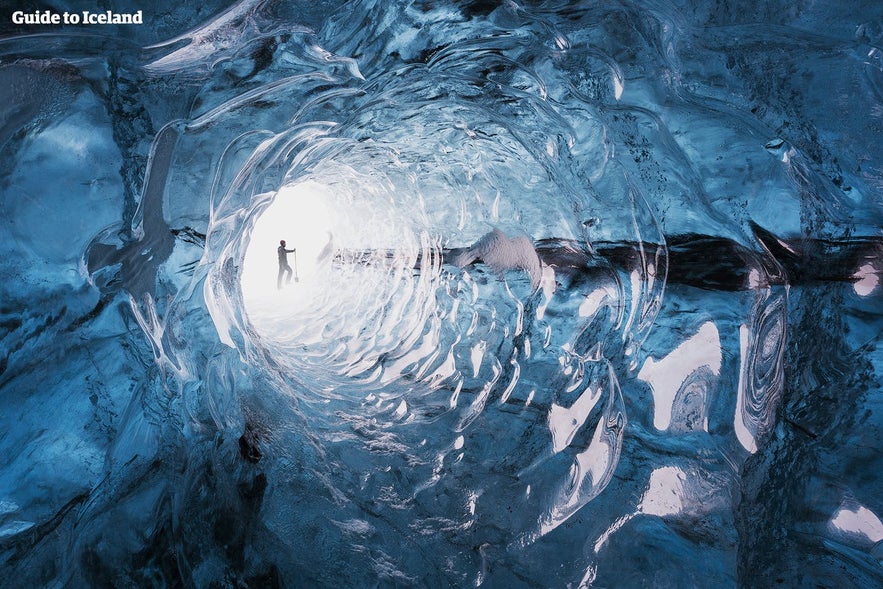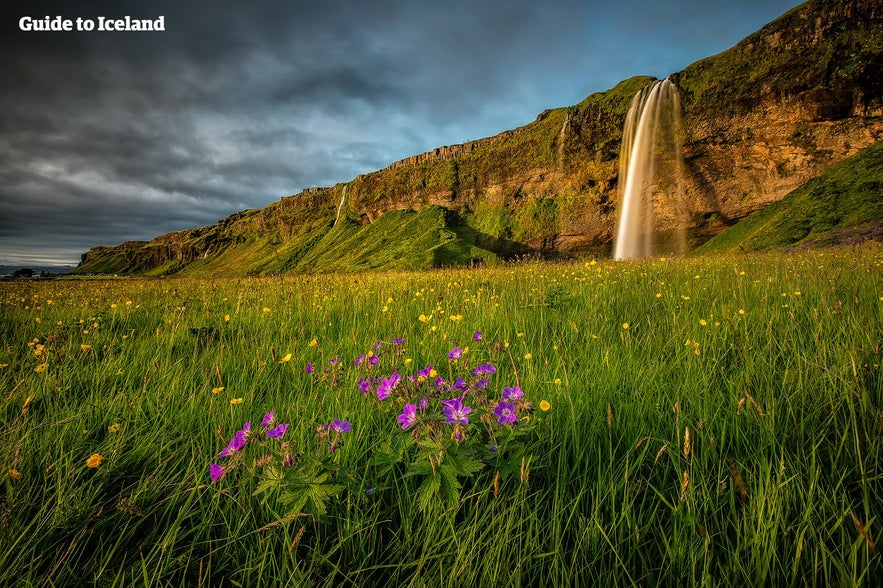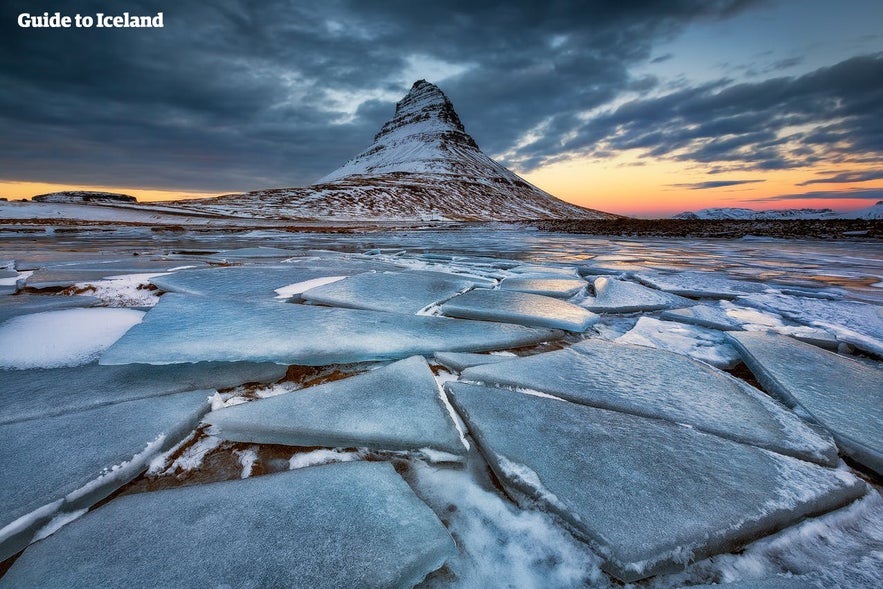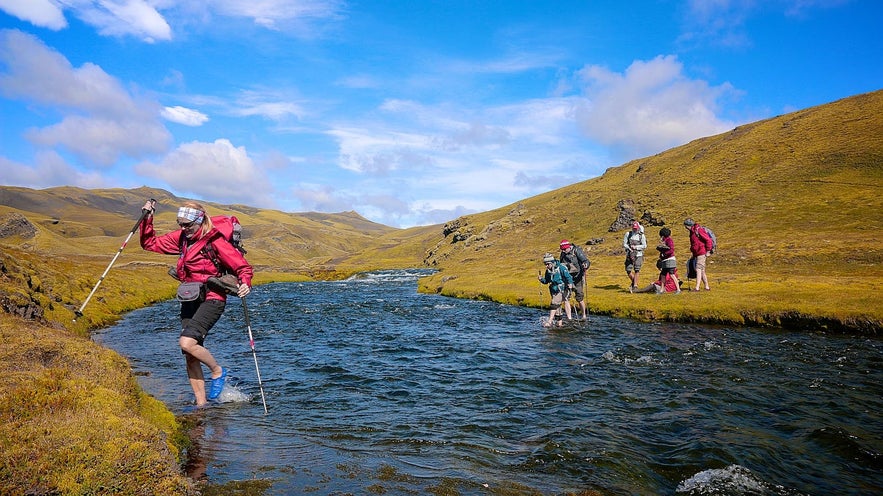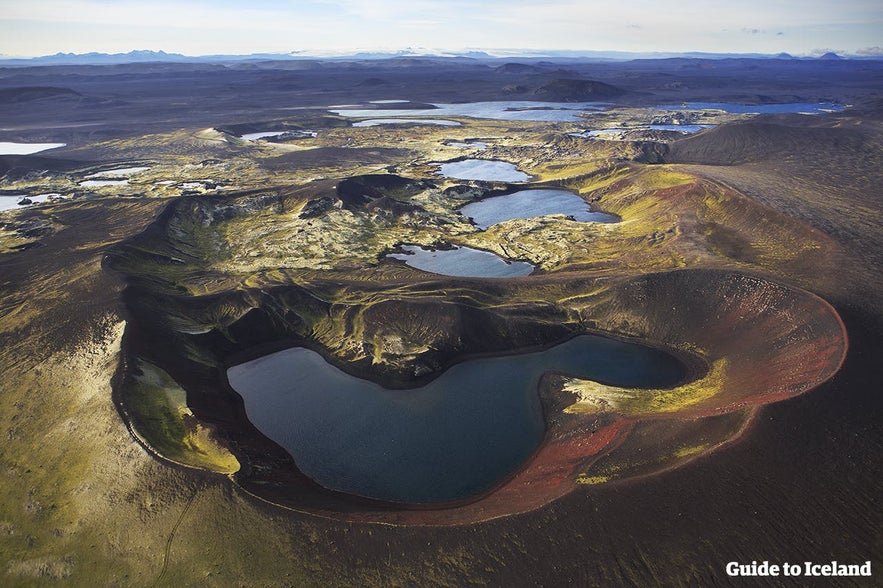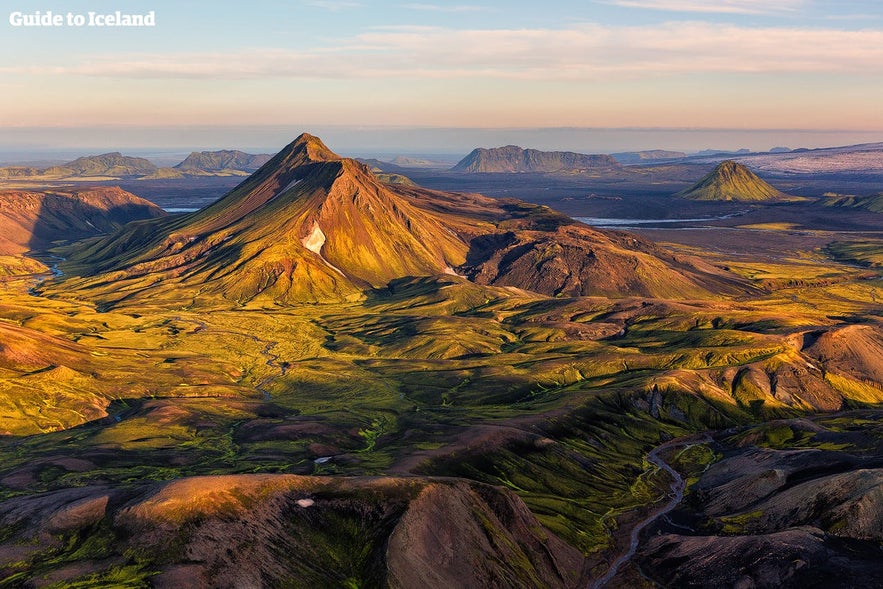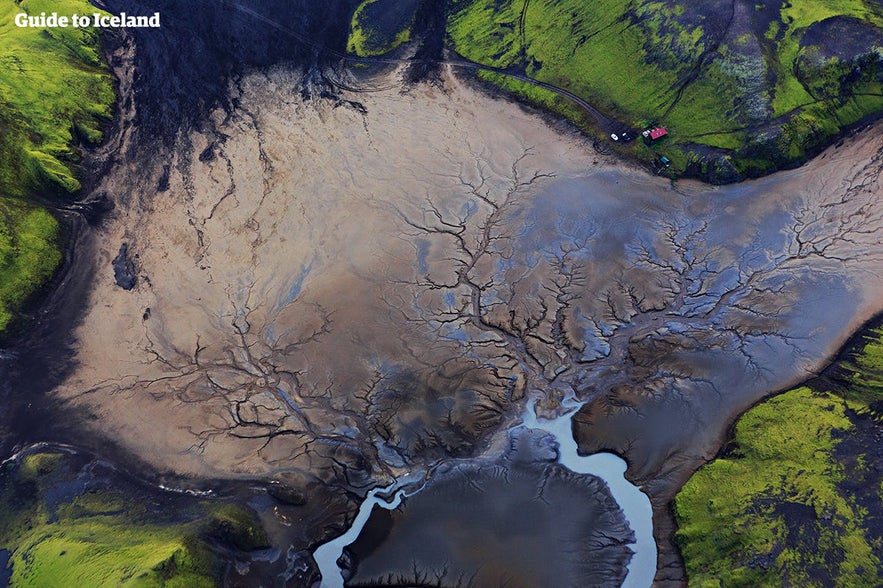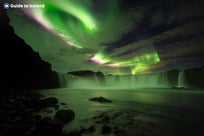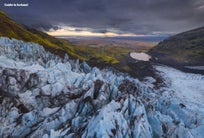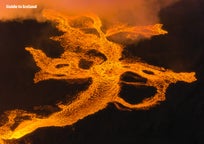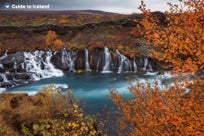
The Right Clothes and Gear for Tours in Iceland

What kind of clothing do you need for hiking in Iceland? What equipment and shoes will you need to go in the ice caves or on the glaciers, lava caving or horseback riding? Do tour operators provide equipment for you, or do you need to pack everything yourself? Read ahead to learn all about what kind of clothes, shoes and gear you need for tours in Iceland.
- Find out exactly What to Pack for Travel in Iceland
- Read about The Weather in Iceland & Best Time to Visit
- Be sure to research the Top 10 Apps for Travelling in Iceland
Before joining Guide to Iceland, I worked as a guide for one of the country’s major tour operators. As enjoyable as it was to get out into the stunning nature every day, one thing that I had to regularly contend with was giving my clothes and shoes away to guests who arrived for the excursion wearing the wrong thing.
I showed a group around Gullfoss waterfall in midwinter in a t-shirt and long-johns due to a honeymooning couple who hopped on the minibus dressed for the Bahamas. I drenched myself to the bone when one gentleman forgot his waterproofs on a hike through Reykjadalur valley, and once even had to traverse Leiðarendi lava cave in socks because someone had decided to wear their new expensive designer sneakers, which they did not want to see blemished.
For your safety and comfort, therefore, (and the safety and comfort of any desperate-to-please tour guides) it is imperative to know what kind of shoes and clothes you will need for your tours in Iceland. Being unprepared leaves you vulnerable to the country's wild elements, and in worst case scenarios, could lead to avoidable yet very serious dangers.
While what you will need to bring depends on what excursions you are doing, how long you will spend outside the city, and the time of year that you are coming, the following guidelines will reveal to you the items you should be packing.
Proper Shoes to Bring to Iceland
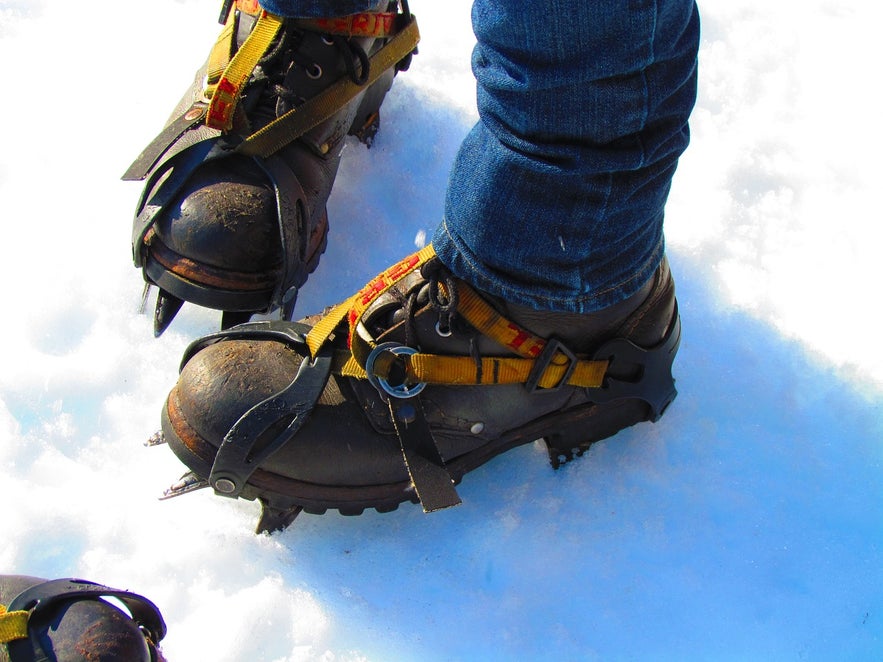
If there is one item of clothing that will provide safety and comfort on your tours more than any other, it is a decent pair of hiking boots with ankle support. Iceland’s terrain is rugged, uneven, and often icy, so the sturdier your shoes, the easier time you will have hiking and exploring.
While you do not need entirely rigid boots designed for advanced glacier hiking for most trips onto the ice caps, or into ice caves or lava tubes, ones that have grooves to support crampons will add to your comfort. Crampons are used in many tours - often even on sightseeing trips in winter - to help keep you steady on the icy ground.
Though they will fit around almost any flat-levelled, closed-toe shoe, they will not do so as securely as around a decent hiking boot.
For ice-climbing tours, your boot will need to be at least semi-rigid, so that you can put your weight on your feet as you scale a glacial ridge. I bore witness to an incident where an ice-climber in flimsy trainers lost both his crampons halfway up a wall, and while he remained in perfectly safe hands, those beneath him had to scurry for cover from the falling metal.
Crampons are provided for you by your tour provider on almost every tour that they are required, so you do not need to worry about bringing them. If, however, you are not comfortable on icy ground and plan on doing a lot of walking around Reykjavík in winter, you may want to look into purchasing a pair.
If you are coming to Iceland outside of winter, and are not planning to take long hikes, glacier walks or trips into a lava or ice cave, you should be happy in trainers, sneakers, or other flat-levelled, closed-toe shoes for most tours.
Whale-watching tours, for example, only require you to wear shoes that will allow you to remain steady when the boat rocks. If snorkelling or diving in Silfra, you will get changed into the underwater gear provided for you in the carpark, and thus will not be walking much regardless of your footwear.
Golden Circle and South Coast tours do not usually bring you over difficult terrain; be aware, however, that it can get slippery even in summer at sites such as Gullfoss and Seljalandsfoss waterfalls, so shoes with a good grip are still highly recommended.
Also, remember to pack correctly for a combo tour. Your sturdy trainers may be fine for the horseback riding component of a riding and caving excursion, only to get damaged when you try and navigate across the jagged, slippery ground of the lava tube.
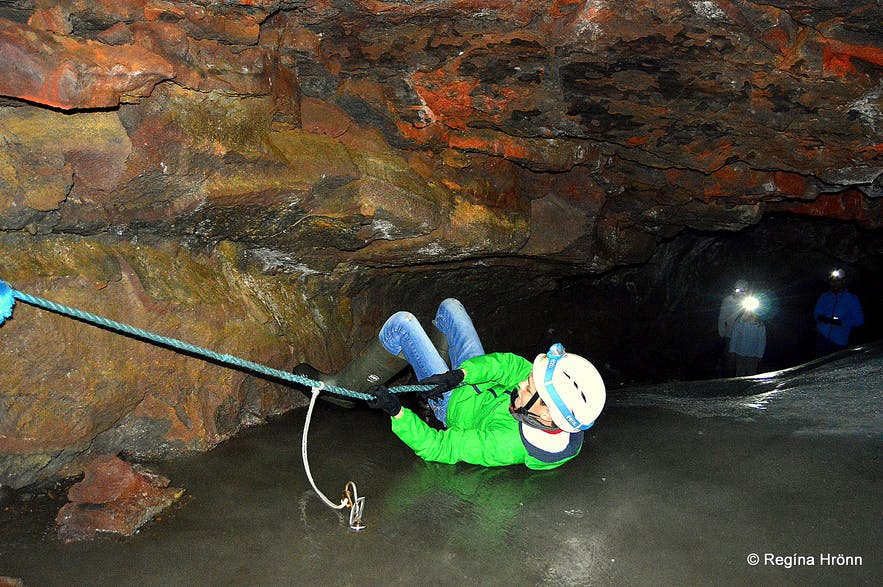 Photo by Regína Hrönn Ragnarsdóttir
Photo by Regína Hrönn Ragnarsdóttir
Sandals have virtually no use in Iceland, even in summer when the average temperature hovers at just over 10° Celsius. The one exception to this is on multi-day hikes, such as the Laugavegur Trek from Þórsmörk to Landmannalaugar, which will require you to cross rivers on foot. Even in these cases, your sandals will need straps, so you don’t lose them in the current.
Your flip-flops will find use only if you are relaxing on Reykjavík’s Nauthólsvík Beach. Your heels, meanwhile, should be exclusively saved for a drinking or food tour around the capital (and even then, in winter, you’ll want to have a change of shoes to walk from venue to venue in).
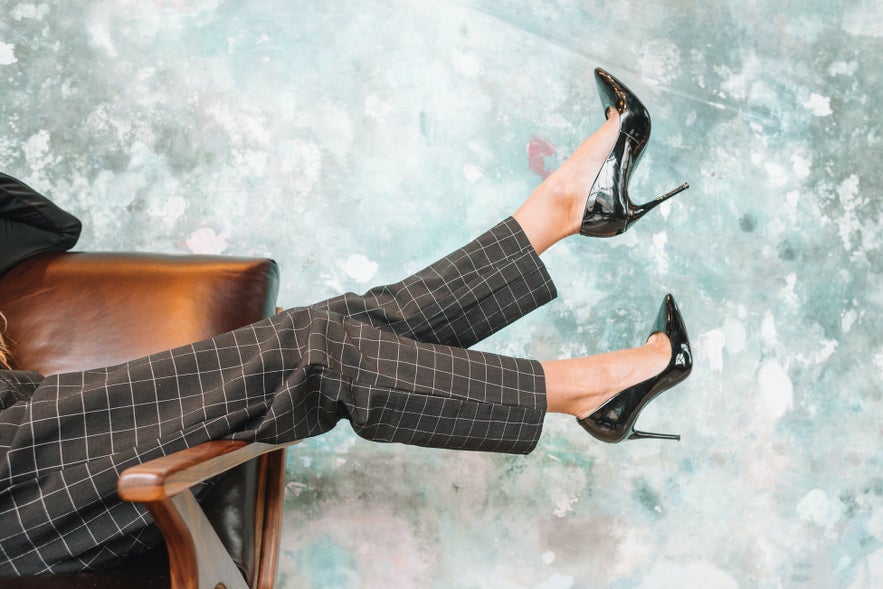 Photo by Amanda Vick
Photo by Amanda Vick
If travelling in Iceland, you’ll no doubt see countless people in completely unsuitable footwear for whatever they’re doing. Even in Reykjavík, you’ll see native Icelandic women (and possibly some men; it's a cosmopolitan city after all) skidding outside of bars in their high heels in winter. I will admit that the shoes I thoughtlessly slipped on today I bought in Morocco, and have about as much grip on the ice as a pair of rollerskates.
To avoid injury, embarrassment, or just cold toes, however, it’s essential to ignore the example set by many of us complacent locals, and bring and wear the correct footwear.
If you made the mistake of forgetting your hiking shoes, or do not want to buy a brand new pair for just one tour, such as a glacier hike on Sólheimajökull or a lava caving exploration into Leiðarendi, you can often rent them from your tour provider. You will need to check the information of each excursion, however, to see if this is possible.
Proper Clothes to Bring to Iceland
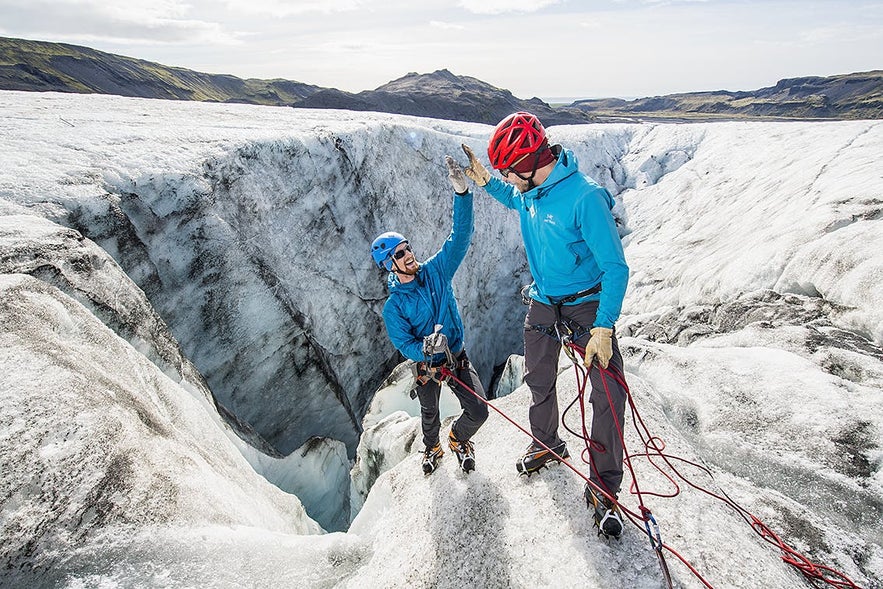
Iceland tells you in its very name that the country can be quite chilly, which is why it is important to bring appropriate clothing for the adverse weather. In summer, it can still become very cold, wet and windy, and in places such as the Highlands and Westfjords, it may even still snow.
As a general rule, therefore, you will always want to bring thermal underwear, warm layers of preferably wool (which traps and warms up any moisture), with waterproof and windproof outer-layers. Thick woollen socks, gloves, hats and scarves are all essential for winter travellers, and will likely come in use for those travelling in summer too.
While denim and cotton may be fine in many situations in the warmer months, as soon as the weather turns, you will find them very uncomfortable. Denim and cotton draw moisture to the skin, and while this is nice and cooling in warm, humid climes, it can be unpleasant and even dangerous in Iceland.
- See also: What to Pack for Travel in Iceland
Certain tours have options that will help you out if you did not pack warm enough for what they require. Whale-watch tours on larger vessels always have a closet full of overalls you can borrow free of charge; snowmobiling, ATV and horseback riding excursions often offer the same, and waterproof jackets and pants can be rented for most glacier hikes and caving tours.
If taking a multi-day hike, your list of required packing is longer than for the average traveller; for one, you will want several of each item listed above, considering many garments are likely to get wet as you wade through rivers and expose yourselves to the elements.
Having more warm layers than you think you will need is also essential, as taking a jumper off when you are too hot is easier than materialising one from thin air when you are too cold.
- See also: Hiking in Iceland
A final piece of clothing you will need for any trip to Iceland, at any time of the year, is a swimming costume to enjoy the country’s best swimming pools and natural hot springs. Of course, especially if out in nature, you'll also need a towel.
Other Gear Needed for Hiking in Iceland
Whether taking a guided multi-day hike or hiking out by yourself for any length of time, there are several extra pieces of gear that you should not be caught without. Within your rucksack, it is essential you have the following:
- A water bottle: Although there are freshwater springs dotted across many hiking trails, it is much wiser to allow them to be your backup, rather than your primary, water supply. Bring at least a litre for any day hike.
- A first aid kit: While your guide will have first aid supplies on a guided tour, it is imperative you also have your own; there is no such thing as too much precaution when in the wilds of Iceland.
- Food: If you are taking a multi-day trek with a guide, your meals will be organised for you, and all you’ll need are some snacks to get you through the day. If travelling alone, however, you’ll want to have more food than you think you’ll need to prepare for any eventuality.
- Cooking utensils: Again, on a guided tour this will be sorted for you. If travelling without a guide, however, ensure you have what you need to prepare your meals.
- A map and compass: A GPS system is great, but at very least you will want a map and compass to navigate the area in case you get lost. Even with a GPS system, these should be in your bag as a back-up.
- A phone/radio: Having a phone is essential; most of Iceland is covered by wifi, so you can call the emergency number of 112 and receive a rapid response to an incident in much of the country if needed.
Depending on the type of hike you are taking, you may also want the following.
- A tent, mattress and sleeping bag: If you plan on taking a multi-day hike in which you are camping, these are clearly a requirement. Many multi-day hiking tours either provide or rent these, so you don’t often need to worry about packing them in your luggage.
- A hiking pole: For those on multi-day hikes, or those who could be more confident on their feet, a hiking pole will be handy for navigating rough terrain and ascending slopes.
- Sunglasses: Iceland’s summer is bright throughout the whole day, so sunglasses will be appreciated; this is especially the case in your hike involves a trek over the glaciers, due to the intensity of the sun’s reflection of the ice.
- Toilet rolls and plastic bags: It should go without saying that if nature calls when you are far from any bathroom, you will need to clean up after yourself like an adult human being. While I apologise if this seems patronising to say, too many tourists fail to understand that this country’s incredible nature is not a public bathroom.
While not gear, other preparations you should make before hiking in Iceland are to register your plans on safetravel.is so that authorities can always find you on GPS should you be missing.
- See also: Camping in Iceland
To conclude, packing for hiking and other tours in Iceland should be no problem, so long as you are aware of the requirements of what you are going to do. Think about the season, the terrain you will encounter on the excursion, and how comfortable you are on your feet, and remember that it is always better to pack for an unlikely incident than to be caught in one unprepared.
Andre spændende artikler
Hvor dyrt er der på Island? Hvornår du skal rejse og hvordan du sparer penge
Find ud af, hvor meget en rejse til Island koster, så du bedre kan lægge et budget for din rejse. Hvor dyrt er der på Island? Hvordan er tilstanden for den islandske valuta? Læs videre for at finde...Læs mere
Islands vejr, klima og temperaturer året rundt
Få alt at vide om vejret på Island. Da det er en ø med ekstremer, er vejret ingen undtagelse. Find månedens gennemsnitstemperatur, vejret på de enkelte årstider, hvordan vejret skifter mellem de forsk...Læs mere
Kørsel i Island: Den ultimative guide til roadtrips
Lær alt, hvad du ønsker at vide, om kørsel i Island. Find ud af, hvorfor det er nemt at køre i Island om sommeren og mere vanskeligt om vinteren. Lær, hvordan du lejer en bil til din kør-selv-ferie,...Læs mere

Download Islands største rejsemarkedsplads til din telefon for at administrere hele din rejse på ét sted
Scan denne QR-kode med dit telefonkamera, og tryk på det link, der vises, for at lægge Islands største rejsemarkedsplads i lommen. Indtast dit telefonnummer eller din e-mailadresse for at modtage en sms eller en e-mail med downloadlinket.


